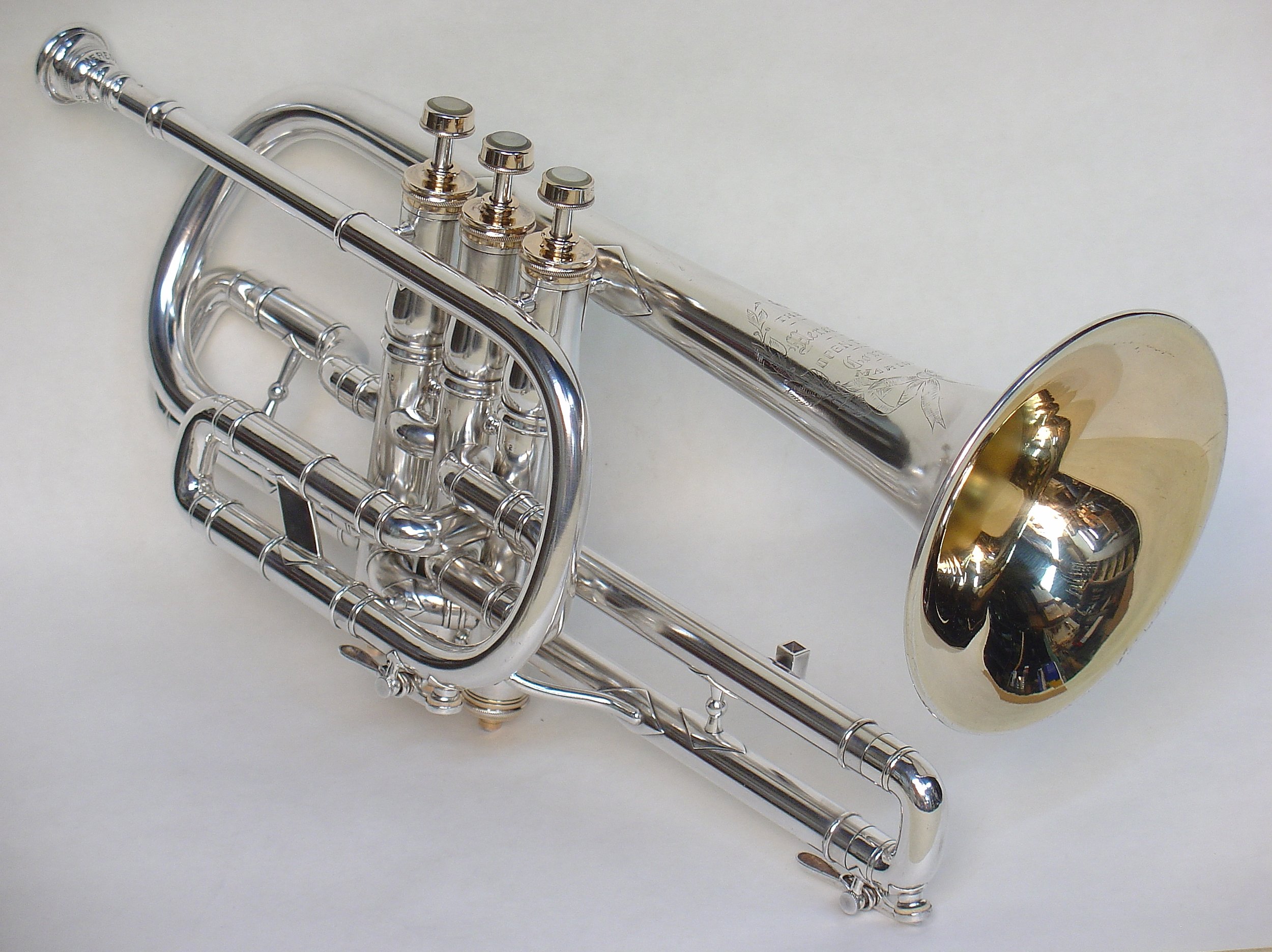Meredith "Open Tone" Cornet
The Meredith Open Tone Cornet went into production as early as 1906 in Marion, Ohio in a shop that was never to be a rival of the large makers. Its originator, Z. Albert Meredith might easily be discissed as just another enthusiastic and over-reaching cornet player with a gimmick, but there seems to be more substance there. According to the calculations of Meredith authority Nick DeCarlis, there were less than 1000 of these cornets made and most of these before the corporation dissolved in 1918. In all likelihood, instruments made after that time were assembled using components made in the original factory.
In the 1930s, Meredith moved to Long Beach, California and opened a repair shop, where he continued to assemble cornets and trumpets from these parts occasionally. An example of a trumpet built around 1950 can be seen elsewhere on this site. There, he hired a young musician, Don Heaston, and taught him about both repair and manufacturing of brass instruments. Before his death, Meredith sold the company to Heaston.
When I was first learning the fundamentals of the repair business in his shop in Fullerton, California, Mr. Heaston still had on hand what was left of the stock made in the Ohio factory. I recall practicing removing dents from bells that had never been mounted on cornets and there was at least one complete cornet that had never been plated. Unfortunately, most of this stock was stored in Heaston's barn in Cucamonga which burnt to the ground not long after.
According to Nick DeCarlis, the cornet featured here was likely made shortly after the granting of Meredith's 1912 patent. This is the most common form of the Open Tone Cornet, a more deluxe version has stop rods for each valve slide (see Nick's VintageCornets.com for other examples). Click on image for larger view.
The concept of the design of Meredith's patented valves was that the sharp curves inside the pistons of most brass instruments were eliminated and the air column had the same curves, whether the valve was in the up or down position. You can see that the curves in each valve slide crook are matched by the curves through the shorter tubing on the left hand side of the valve casings. A very similar design is seen in the "Four in One" cornets made and patented by Conn and Dupont in 1877, although Meredith was able to patent it again because he was making slightly different claims about the attributes. While both touted the reduced "restrictions" through the pistons, Conn's primary feature was in the longer valve slides that enabled tuning from high Eb to A. Cornet players that have had the opportunity to play one of these cornets in good condition agree that they are among the best playing instruments of their time. While I'm skeptical of the importance of the valve tube curves, I agree that these are great cornets with excellent intonation, response and valve action. Even with four ports through each piston rather than the usual three, they are of very light construction, reducing the mass that must be moved each time the valve is depressed or released.
This cornet is particularly well preserved and was certainly only used for a very short time. It is possible that it was purchased late in the life of the original owner. In the case were two older mouthpieces: one by D.C. Hall from the 1860s and the other by John Heald from about 1890 or later. Both of these were premier cornet makers of their own time. If he owned the cornets by these makers when new, he must have been at least in his 60s by the time that the Meredith was new.
This cornet retains most of the original parts that came with it in the original leather covered case. It has tuning slides for Bb and A, a third one with Bb/A quick change rotary valve and an extension that can be used with any of these slides for low pitch. The tuning bit is likely original. The mouthpiece shown is one that I got from Don Heaston in the 1970s, the original is missing. This cornet is 13" long with the mouthpiece removed, the bell rim diameter is 4 7/8" and the bore measures .461".





